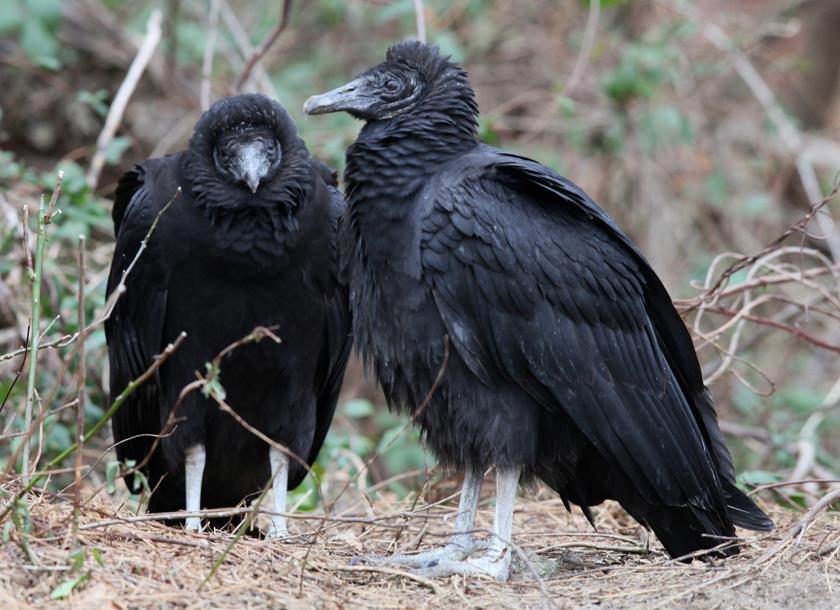For state and federal wildlife and agriculture agencies, it’s deja vu. Last spring, dozens of black vultures were found dead in the area of Conowingo Dam. It was an outbreak of avian influenza, a highly contagious disease among birds that can threaten wild populations and domestic stock in poultry operations.
Now, vultures are turning up dead again near the dam. So far, the United States Department of Agriculture reports 19 vulture deaths due to bird flu. Because vultures are scavengers, the disease can spread quickly in their population.
Maryland Department of Agriculture (MDA) spokesperson Jessica Hackett says, “The increase in vulture mortalities is significant and has elicited a multiagency response. MDA, the Maryland Department of Natural Resources, USDA Wildlife Services and USDA Fish and Game along with Constellation Energy [which owns and operates the dam] are working together to remove infectious carcasses to break the infection cycle.” Hackett explains this cycle: “The carcasses have a large virus load and are a source of infection when consumed by healthy vultures.”
Constellation announced that while Fisherman’s Park is still open, the Mason Dixon trail is temporarily closed from Fisherman’s Park to Shuresville Road, including the gravel parking area adjacent to the Fisherman’s Park trail.
It’s not clear why vultures in Harford County have seemed to suffer the worst from these outbreaks. Hackett says, “The roost is under regular observation and a couple of weeks prior to the significant increase in mortalities, the roost was inspected. No abnormalities were observed at that time.” MDA does speculate that because vultures have a large flight radius, viruses could be brought from many different sources. Currently deaths are high, but not at the triple-digit levels seen last year. MDA says the joint management effort aims to get ahead of the virus earlier in the game.
Bird flu cases in the Bay region are not limited to just the Conowingo Dam area. Since March 23, cases have been confirmed for a bald eagle in Virginia, red-tailed hawks in Pennsylvania and the vultures in Maryland.
MDA says the public should stay at a distance from any dead birds or those who look or act sick. Contact DNR immediately if you do find a sick or dead bird, so it can be handled properly.
The spread of bird flu can quickly trickle down to the poultry industry, a major part of Maryland’s economy. According to 2020 statistics, the poultry industry is responsible for as much as $6.7 billion in economic activity through the state and creates or supports more than 26,000 jobs.
Hackett says bird flu “continues to be a major concern for the poultry industry” as the wild bird mortalities demonstrate the disease is still in the area. “All poultry owners, workers, etc. should continue to practice very strict biosecurity because of the detections in wild birds,” Hackett cautions.
The disease also has implications for waterfowl hunting and in bird rescue facilities. Tri-State Bird Rescue, one of the largest wild bird rescues in the mid-Atlantic, had an outbreak last year that required it to be under lockdown for weeks, meaning they had to turn away new rescues.
In the 2022 outbreak, the disease also turned up in Bay-region waterfowl including northern shovelers, American wigeon, black duck and gadwall—all harvested by hunters. While bird flu doesn’t pose a risk to humans, people can spread the virus to pet birds or poultry, so hunters are advised to dress game birds in the field whenever possible, double-bag carcasses and feathers, and keep boots and gloves away from any domestic fowl or poultry.
-Meg Walburn Viviano




